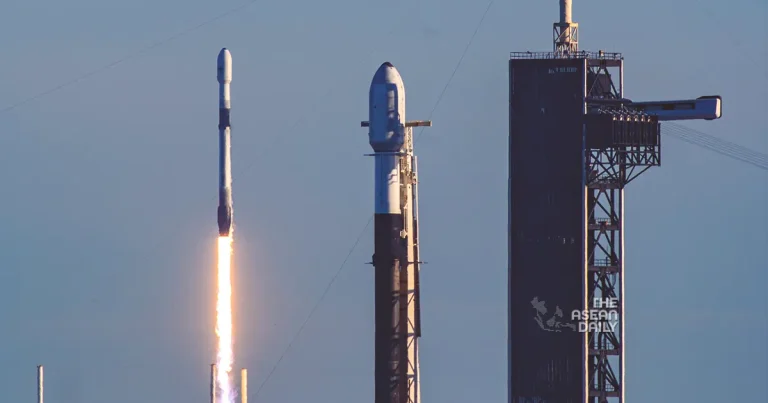15-2-2024 (NEW YORK) A moon lander crafted by Houston-based aerospace company Intuitive Machines embarked on its mission from Florida early on Feb 15, aiming to achieve the first United States lunar touchdown in over fifty years and the first by a privately owned spacecraft.
Dubbed Odysseus, the company’s Nova-C lander soared into the skies shortly after 1 am EST (2 pm in Singapore) atop a Falcon 9 rocket operated by billionaire Elon Musk’s SpaceX. The launch took place from Nasa’s Kennedy Space Centre in Cape Canaveral.
A live Nasa-SpaceX online video feed captured the awe-inspiring moment as the two-stage, 25-storey rocket thundered off the launching pad and ascended into the dark expanse above Florida’s Atlantic coast, leaving behind a fiery, yellowish plume of exhaust.
Originally scheduled for Feb 14, the launch faced a 24-hour delay due to irregular temperatures detected in the lander’s liquid methane propulsion system. SpaceX confirmed that the issue was swiftly resolved.
Although branded as an Intuitive Machines mission, the IM-1 flight carries six Nasa payloads designed to collect data about the lunar environment ahead of Nasa’s planned return of astronauts to the Moon later in the decade.
A Historic Venture The launch follows a month after a lunar lander from another private firm, Astrobotic Technology, encountered a propulsion system leak en route to the Moon on Jan 8, shortly after being placed in orbit by a United Launch Alliance Vulcan rocket.
The mishap marked the third occasion a private company failed to achieve a “soft landing” on the lunar surface, following unsuccessful attempts by companies from Israel and Japan.
Intuitive Machines’ Nova-C vehicle, resembling a hexagonal cylinder with four legs, is scheduled to land at crater Malapert A near the Moon’s south pole on Feb 22 after a week-long flight. If successful, it will signify the first controlled descent to the lunar surface by a US spacecraft since the final Apollo crewed Moon mission in 1972, and the first by a private company.
The mission also marks the first journey to the lunar surface under Nasa’s Artemis Moon programme, as the US races against China’s efforts to land its own crewed spacecraft there.
Navigating the Space Race IM-1 represents the latest test of Nasa’s strategy to utilise spacecraft built and owned by private companies to reduce the cost of Artemis missions, aimed at human exploration of Mars.
In contrast to the Apollo era, Nasa now purchases services from the private sector, which owns and operates the spacecraft themselves.
While Nasa aims for a first crewed Artemis Moon landing by late 2026, China targets 2030 for its own lunar mission. Small landers like Nova-C are expected to pave the way, equipped with instruments to survey the lunar landscape, its resources, and potential hazards.
Odysseus will focus on space weather interactions with the Moon’s surface, radio astronomy, precision landing technologies, and navigation.
Intuitive Machines plans for an IM-2 mission to land at the lunar south pole in 2024, followed by an IM-3 mission later that year featuring several small rovers.
In January, Japan became the fifth country to land a probe on the Moon, achieving an unusually precise “pinpoint” touchdown with its Slim probe. In 2023, India became the fourth nation to land on the Moon, after Russia failed in its attempt the same month.
The US, the former Soviet Union, and China remain the only nations to achieve successful soft lunar touchdowns, with China achieving a milestone in 2019 with the first landing on the far side of the Moon.




